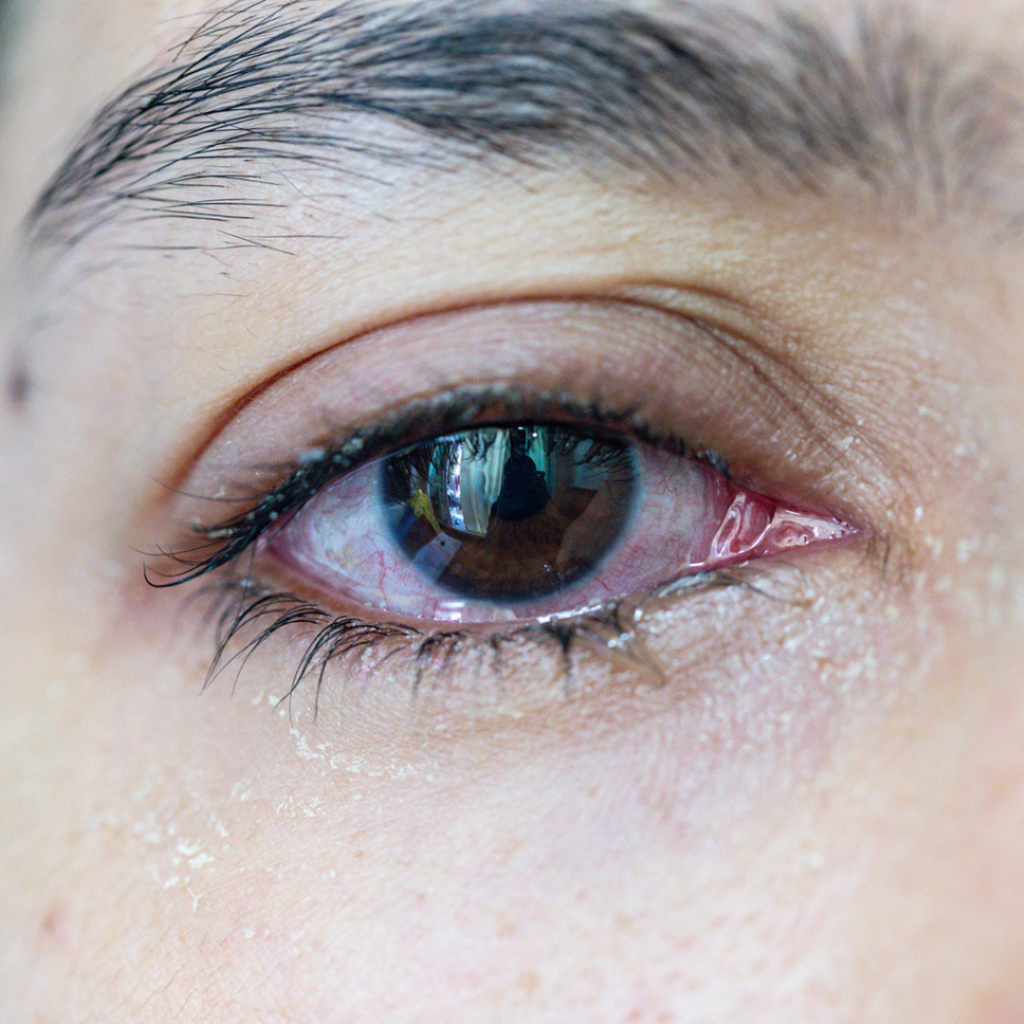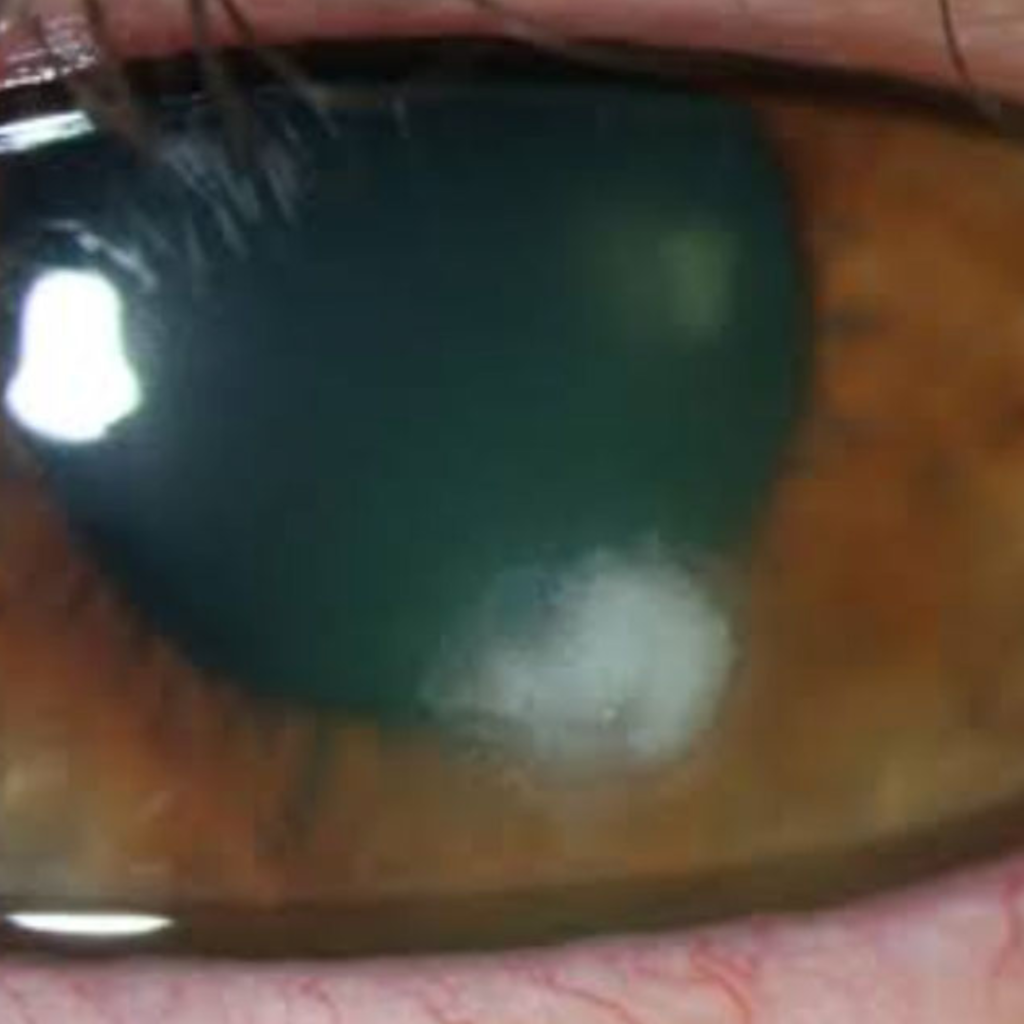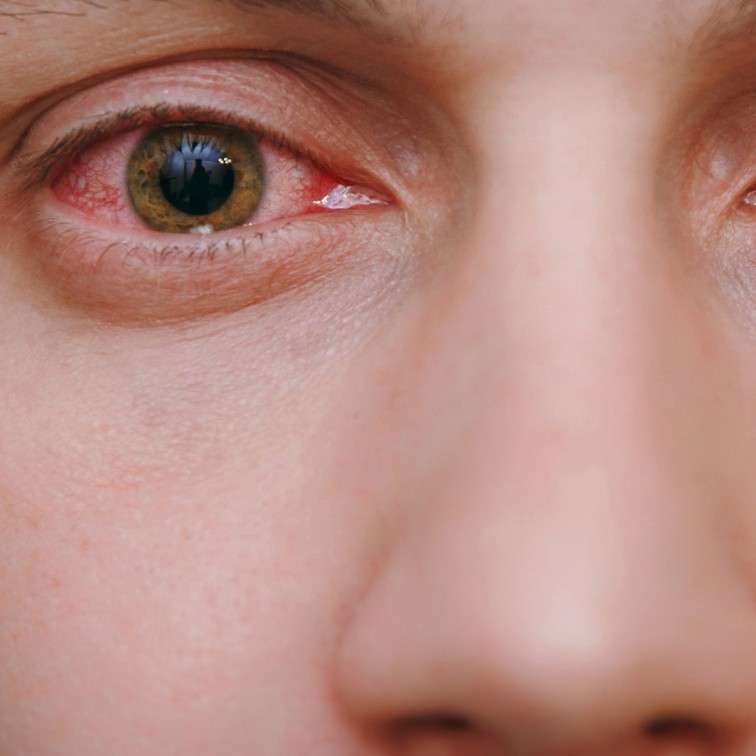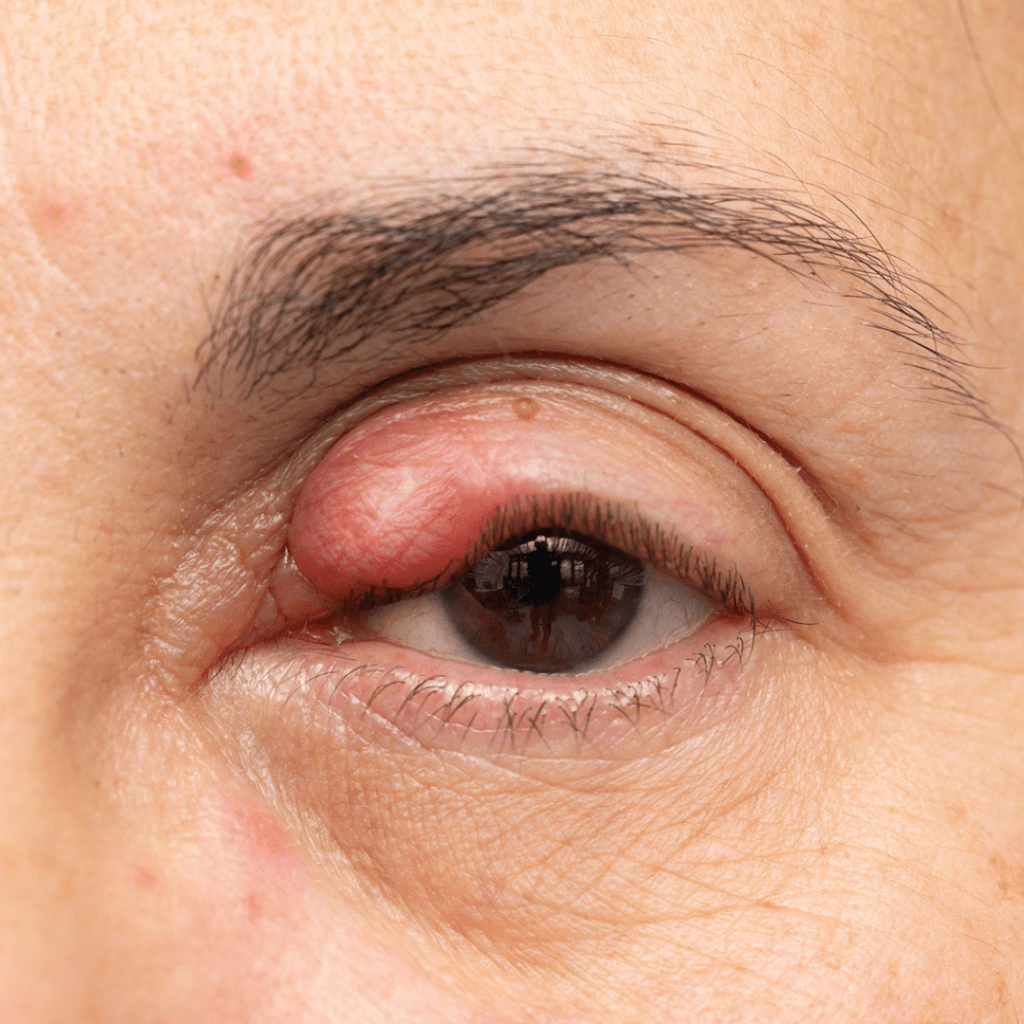Given the critical role that our eyes play in our daily lives, eye health is a crucial component of overall health. They enable us to see our surroundings and carry out daily activities. But just like any other body part, the eyes are susceptible to several illnesses and conditions that can impair vision, cause discomfort, and even result in blindness. This blog post will discuss the top 10 eye conditions and the warning signs for each.
1. Age-Related Macular Degeneration (AMD) –

AMD is a common eye condition that affects people over 50 and progresses to blindness.
Symptoms:
- Loss of central vision that occurs gradually is the main sign of AMD.
- Reading, driving, and other activities that call for clear vision can be affected by the loss of central vision.
- AMD can also cause distorted or blurred vision.
- Dry macular degeneration (dry AMD), the most prevalent type of AMD, typically doesn’t show symptoms until it has advanced significantly. As a result, it’s critical to monitor dry AMD and act quickly if your vision changes.
Treatment for wet AMD is difficult and requires monthly medication injections to halt the disease’s progression.
2. Glaucoma –
Glaucoma is a group of eye conditions usually due to raised intraocular pressure, that can harm the optic nerve and impair vision.

Symptoms:
- Gradual loss of vision, especially in the periphery.
- Blind spots in the vision
- Open-angle glaucoma, the most prevalent type, does not manifest symptoms until it has advanced significantly.
- Angle-closure and narrow-angle glaucoma, the other types, are more likely to result in severe pain and vision loss.
Glaucoma cannot be cured, but it can be managed with intraocular lowering drops, surgery, and laser therapy to stop its progression.
3. Cataracts –

A clouding of the eye’s natural lens known as a cataract impairs vision.
Symptoms:
- Vision blurriness,
- frequent change of glasses
- reduced color perception and contrast sensitivity
- sensitivity to light and glare, and
- a steady decline in visual acuity are all signs of cataracts.
Age is the primary factor in cataract development. Congenital or developmental defects, specific medications, radiation, nutritional deficiency, trauma, and infection are some additional causes.
The only available treatment is surgical cataract lens removal and artificial lens implantation.
4. Diabetic Retinopathy –
Diabetes patients with uncontrolled blood sugar levels are more likely to develop diabetic retinopathy, a condition that affects the retina’s tiny blood vessels.

The most common cause of blindness in working-age adults is diabetic retinopathy (20-65 years).
Symptoms:
- Loss of vision
- Blurred vision
- Floaters or dark spots floating in front of the eyes
- Flashes of light
Maintaining a healthy lifestyle and blood glucose levels, managing high blood pressure, and getting regular eye exams can all help to lower this risk.
An essential component of routine diabetes care is a retinal exam. Your eye doctor will be able to identify any abnormalities in the retina, such as bleeding, hemorrhage, or new blood vessels, and treat them promptly with a laser or injections.
5. Dry Eye Syndrome –

In this condition, the eyes don’t produce enough tears or the tears evaporate too quickly, which can irritate the eyes and impair vision.
Symptoms;
- Burning, itching, or stinging sensation,
- Blurred vision
- Watering
- Eye strain
- Gritty feeling
- Redness, and
- Light sensitivity are all signs of dry eye syndrome.
When your eyes are dry most of the time, it’s time to seek assistance. Severe symptoms can be a sign of more serious health issues. However, there are some over-the-counter lubricating eyedrops that can ease your discomfort in mild cases.
6. Corneal ulcers:

These are painful sores that develop on the eye’s transparent outer layer and can impair vision. Corneal ulcers are more likely to occur in contact lens wearers.
Symptoms:
- Eye pain,
- Redness,
- Light sensitivity, and
- Vision loss are all signs of corneal ulcers.
Since corneal ulcers are extremely serious, the patient needs to be taken right away to the doctor so they can be examined.
Antimicrobials are typically used as part of the treatment to fight infection and other drugs to help with pain or irritability.
The doctor frequently has to perform urgent procedures like bandaging or pressure patching. In other situations, it might entail a corneal transplant.
7. Conjunctivitis –

The thin, transparent membrane that covers the white of the eye and the inner surface of the eyelids, the conjunctiva, is inflamed in this condition, also known as ‘Pink Eye‘. A viral infection is frequently the cause of conjunctivitis. A chemical insult, allergies, or bacterial infections are some additional causes.
Symptoms:
- Watering,
- Eye discharge
- Pain
- Matting of eyelashes
- Itching, and
- Redness of the eyes.
These are often treated with lubricating eyedrops and ointments and in certain cases with antibiotics and steroids.
8. Retinal Detachment:
This serious condition causes vision loss when the retina separates from the supporting tissue.
Symptoms:
- Sudden painless loss of vision
- Sudden increase in floaters,
- Light flashes,
- and a shadow or veil that obscures vision are all signs of retinal detachment.
Management involves, laser therapy, scleral buckle procedure or pars plana vitrectomy surgery.
9. Styes –

Due to clogged oil glands, styes are red, uncomfortable bumps that appear on the edge of the eyelid.
Symptoms:
- Pain,
- Redness,
- Watering,
- Swelling, and
- Tenderness along the edge of the eyelid are all signs of styes.
Treatments include warm compresses and antibiotics.
10. Uveitis:
Uveitis is the medical term for swelling or ocular inflammation. The uvea, the middle layer of the eye, is typically affected, but it can also affect other important eye structures, which could cause permanent vision loss.
Symptoms:
- Eye redness,
- Pain,
- Blurry vision,
- Light sensitivity,
- Watering, and
- Seeing floaters in your field of vision are among the symptoms.
Although the cause is largely unknown, it can also be brought on by an immune system reaction, an injury, trauma, an infection, or even cancer.
Treatment involves identifying the underlying condition and treating it with specific medications, steroid injections, and/or surgery.
In conclusion, the most prevalent eye conditions that can result in vision loss are those listed above. It’s crucial to pay attention to any changes in your vision and to seek immediate medical attention from an eye doctor if you notice any symptoms. Vision loss can be avoided and eye health can be maintained with early diagnosis and treatment.
